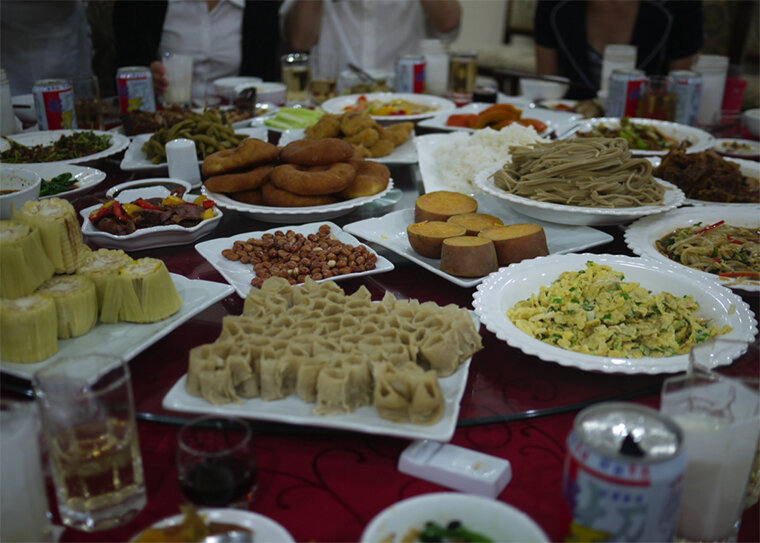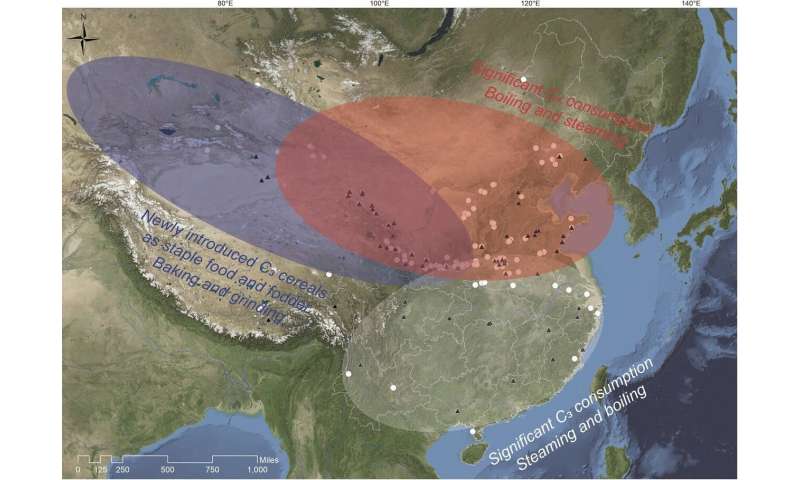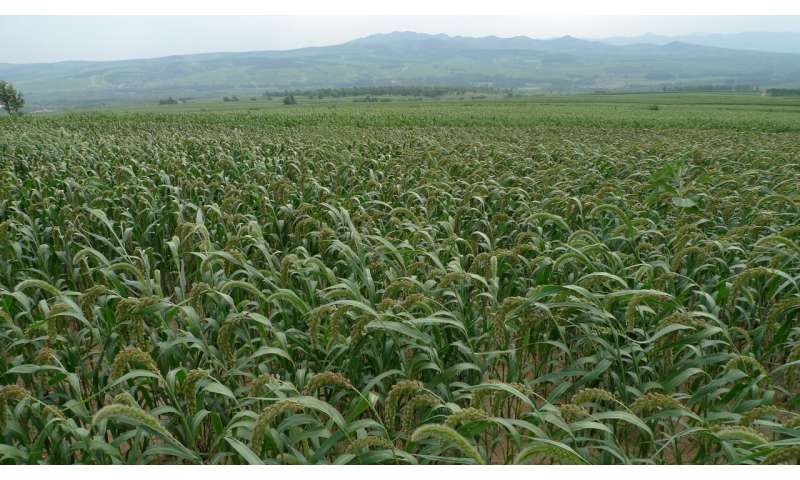#Local cooking preferences drove acceptance of new crop staples in prehistoric China

“#Local cooking preferences drove acceptance of new crop staples in prehistoric China”

The food preparation preferences of Chinese cooks—such as the technological choice to boil or steam grains, instead of grinding or processing them into flour—had continental-scale consequences for the adoption of new crops in prehistoric China, according to research from Washington University in St. Louis.
A new study in PLOS ONE led by Xinyi Liu, associate professor of archaeology in Arts & Sciences, focuses on the ancient history of staple cereals across China, a country well known for its diverse food products and early adoption of many domesticated plants.
The authors drew on data from the bones of nearly 2,500 humans to map patterns of changing cuisines over the course of 6,000 years. They argue that the regional differences in dietary traditions they uncovered were not driven by a traditional narrative of ‘stages’ of subsistence modes—i.e., first hunting, then foraging, then pastoralism and finally farming—but rather by choices that combined and discarded subsistence modes in a number of innovative ways over thousands of years.
“In ancient China, subsistence diversity and regional differences co-existed for thousands of years,” Liu said. “It reflected the choice of people, primarily—not their evolutionary status.”
A second inference from the study concerns cooking. The authors suggest that culinary tradition is one of the main reasons why novel grains like wheat and barley were only gradually accepted by people in central China—particularly the region near the Loess Plateau—after they were introduced from southwestern Asia about 4,000 years ago. But the same new crops were rapidly adopted in the west of China.
“The timing of the translocation of novel food crops in prehistoric times reflects a range of choices that different communities had to make,” Liu said. “These choices were sometimes driven by ecological pressure and sometimes by social conditions or culinary conservatism.
“After 2,000 B.C., wheat and barley were likely cultivated in the field in central China. But they didn’t have staple status in the kitchen or on dinner tables. Why they were initially neglected cannot be explained by environmental or social factors alone. We think the way in which grains were cooked played a role.”

Millet in the north—and nuts, tubers, fruits and rice in the south
Cereal grains—including wheat, rice, barley and millet—are the most important food sources in the world today. But understanding how these foods originated and spread across the world requires a global effort.
Liu partnered with Rachel E.B. Reid at Virginia Polytechnic Institute (formerly at WashU) for this new analysis. They compiled published data of stable carbon and nitrogen isotope compositions measured from 2,448 human skeletal samples from 128 archaeological sites across China. The isotope data from more than 90 previous studies can be read as indicators of what kinds of food these humans were predominantly eating, allowing the scientists to identify striking continental-scale patterns.
“By compiling a substantial set of published carbon and nitrogen isotope data from across China, we had a wonderful opportunity to examine trends in time and space,” Reid said. “We were able to show not only that choices regarding staple foods are deeply rooted and differentiated geographically, but also that culinary traditions may have impacted the reception of new crops.”
They found that, prior to 2000 B.C., Chinese staple cuisines were strongly differentiated between northern and southern cultures, while cultures younger than that were dominated by east-west differences.
“From early on, we saw a contrast in northern cuisine and southern cuisine, starting about 8,000 years ago,” Liu said.
People in the north ate millet, while those in the south ate a variety of nuts, tubers, fruits and rice. The bone records reveal how the differences in cuisine became even more pronounced over time.
“One of the key findings is that the tradition of millet consumption as a staple food is very old, emerging about 8,000 years ago,” Liu said. “At Xinglonggou, an early Neolithic site in southern Inner Mongolia, we estimated the proportional contribution of millet to human diet to be greater than 50%. Soon after its domestication, or perhaps while the domestication process was still underway, millet had become the staple grain.”

The north-and-south dietary distinction in ancient China resonates with the geographic patterning of another early agricultural center, the southwest Asian ‘Fertile Crescent,’ where human subsistence differed significantly between the northern ‘Hilly Flanks’ and the southern Mesopotamian alluvium.
“In both East and West Asia, it seems early peoples combined subsistence modes in a number of innovative hybrids—and fairly readily shifted to other hybrids as they wanted,” Liu said. “The subsistence strategies could be the results of pre-existing social and political conditions, not the other way around, as previously assumed.”
Difference driven by culinary practice
The early north-south divide in staple grains was driven by environmental differences that favored certain plant resources under different conditions, such as those that fare better in wetlands or arid regions. But the east-west division was driven by differences in culinary practice, with eastern cooking habits of boiling and steaming less suited to adopting new cereals like wheat and barley, Liu and Reid believe.
They cite influential work conducted by two London-based scholars, Dorian Fuller and Mike Rowlands, showing that early communities were characterized by a difference in food preparation techniques: culinary traditions based on boiling and steaming of grain in East Asia and on grinding grain and baking the flour in West Asia.

“These East-and-West culinary differences are deeply embedded, and they are probably older than the agricultural origins,” Liu said. “Current archaeological evidence suggests these different cooking technologies are rooted in the Pleistocene, way before plant domestication.”
Liu said: “The question is, when grains like wheat and barley that are rooted in the grinding and baking breadmaking tradition enter a different cuisine—one that favors boiling and steaming and whole-grain eating—what is going to happen?”
Liu and colleagues previously demonstrated that the introduction of wheat into China may have involved selection for phenotypic traits more adapted to the eastern boiling and steaming tradition.
The isotopic data analyzed in this new study shows a very gradual pace of adoption of wheat and barley as staple food in central China, as opposed to a rapid reception of them in western China. The authors relate this to their incompatibility with local whole grain meals based on boiling and steaming.
“We can always relate those prehistoric lives to our own experience of food and cooking,” Liu said. “If nothing else, it takes much longer to cook whole wheat grains with a boiling kit, and it tastes quite different from boiled rice or millet.”
Rapid acceptance of foreign food tradition in Bronze Age Europe
Liu X, Reid REB (2020) The prehistoric roots of Chinese cuisines: Mapping staple food systems of China, 6000 BC-220 AD. PLOS ONE (2020). journals.plos.org/plosone/arti … journal.pone.0240930
Citation:
Local cooking preferences drove acceptance of new crop staples in prehistoric China (2020, November 4)
retrieved 5 November 2020
from https://phys.org/news/2020-11-local-cooking-drove-crop-staples.html
This document is subject to copyright. Apart from any fair dealing for the purpose of private study or research, no
part may be reproduced without the written permission. The content is provided for information purposes only.
For forums sites go to Forum.BuradaBiliyorum.Com
If you want to read more Like this articles, you can visit our Science category.




